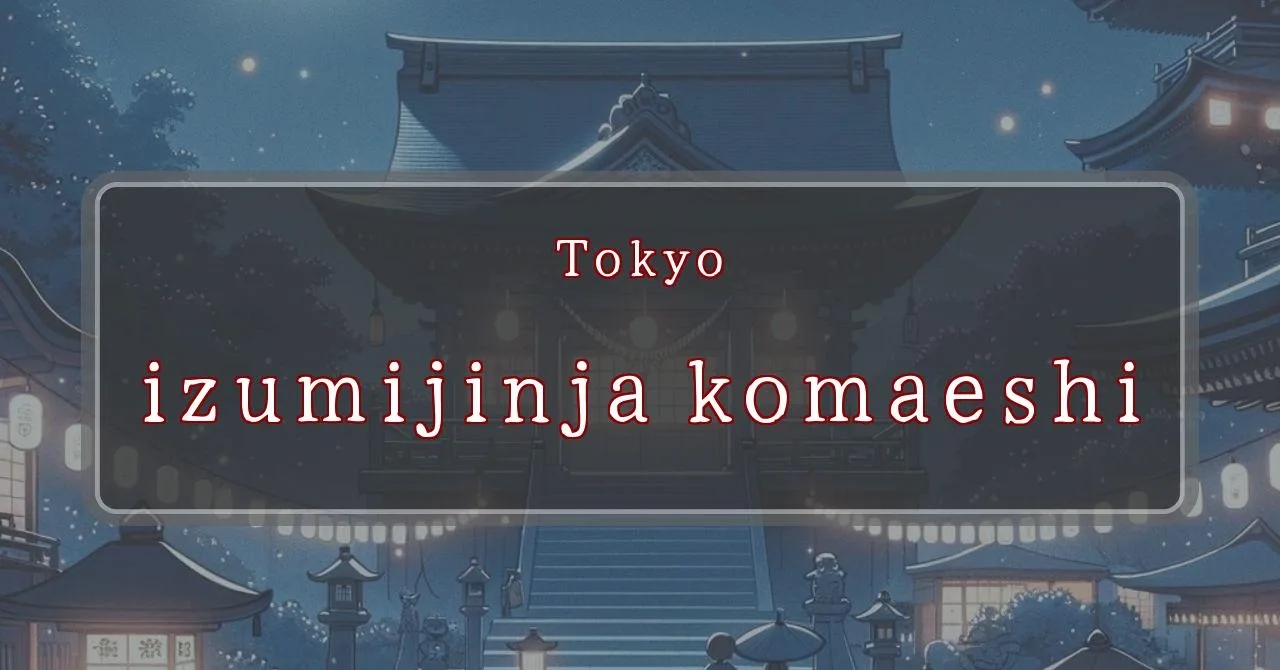Gleaming lights illuminate the night at Izumi Shrine
Basic Information
Izumi Shrine is a Shinto shrine located in Komae City, Tokyo, Japan. It is dedicated to the god Ōkuninushi, who is revered for his association with marriage, childbirth, and good fortune.
- Address: 3-21-8 Nakaizumi, Komae City, Tokyo 201-0012
- Phone Number: 03-3489-8105
- Access: 10 minutes on foot from Komae Station on the Odakyu Line, or 15 minutes on foot from Izumi-Tamagawa Station on the Odakyu Line
- Festival Days: September 16th (Mon), 2024 (Reiwa 6)
Main Events and Attractions of the Festival
The Izumi Shrine Festival is a vibrant and colorful event that attracts visitors from all over the Tokyo area. The festival features a variety of traditional Japanese entertainment, as well as food and games. Some of the most popular events and attractions include:
Mikoshi Procession
The highlight of the festival is the mikoshi procession, which takes place on the final day of the festival. A mikoshi is a portable shrine that is carried through the streets by a team of people. The Izumi Shrine mikoshi is particularly large and ornate, and it is a sight to behold as it is carried through the streets of Komae City.
Kagura Performance
Kagura is a traditional Japanese dance and music performance that is often performed at Shinto shrines. The kagura performance at the Izumi Shrine Festival is a highlight of the event, and it is a great opportunity to see this traditional art form.
Bon Odori Dance
Bon Odori is a traditional Japanese folk dance that is performed during the Obon festival, which is a time to honor the spirits of the dead. The Bon Odori dance at the Izumi Shrine Festival is a lively and energetic performance that is sure to get everyone moving.
Food and Games
The Izumi Shrine Festival also features a variety of food and games. There are food stalls selling everything from traditional Japanese dishes to international cuisine. There are also a variety of games and activities for children and adults alike.
- Mikoshi Procession: A parade of portable shrines carried through the streets.
- Kagura Performance: A traditional Japanese dance and music performance.
- Bon Odori Dance: A lively folk dance performed during the Obon festival.
- Food and Games: A variety of food stalls and games for all ages.
Blessings and Deities
Izumi Shrine is dedicated to Ōkuninushi, a god who is revered for his association with marriage, childbirth, and good fortune. He is also known as the god of matchmaking and縁結び (enmusubi), which means “creating縁 (en),” or connections between people. As a result, many people visit Izumi Shrine to pray for good luck in love and marriage.
- Deity: Ōkuninushi
- Blessings: Marriage, childbirth, good fortune, matchmaking
Origin and History
The origins of Izumi Shrine are unclear, but it is believed to have been founded over 1,100 years ago during the Heian period. The shrine was originally known as Rokuso Shrine and was dedicated to six deities. In 1868, the shrine was renamed Izumi Shrine and dedicated to Ōkuninushi.
- Founded: Heian period (794-1185)
- Original Name: Rokuso Shrine
- Renamed: 1868
- Current Name: Izumi Shrine
Tips and Notes for Visitors
Here are some tips and notes for visitors to Izumi Shrine:
- The shrine is open daily from 9:00 AM to 5:00 PM.
- Admission is free.
- There is a small parking lot available for visitors.
- The shrine is a popular spot for weddings and other ceremonies, so it is best to avoid visiting during these times.
- The shrine is located in a quiet residential area, so please be respectful of the neighbors.
Parking Information
There is a small parking lot available for visitors to Izumi Shrine. The parking lot is located behind the shrine and can accommodate about 20 cars. Parking is free of charge.
- Location: Behind the shrine
- Capacity: 20 cars
- Fee: Free
Popular Stalls and Food Carts in Recent Years
| Type of Stall | Description |
|---|---|
| Takoyaki | A staple at Japanese festivals. Characterized by a crispy outside and a creamy inside. |
| Jaga Butter | A simple yet popular snack of hot potatoes lavishly topped with melted butter. |
| Baby Castella | Small castella cakes, sweet and fluffy treats enjoyed by children and adults alike. |
| Grilled Ayu with Salt | Fresh ayu fish grilled whole with salt, a savory taste of Japanese summer. |
| Shaapin | A unique gourmet item influenced by foreign cuisine, with a chewy skin wrapping the filling. |
| Okonomiyaki | A Japanese grilled dish where you often choose your own ingredients for a personalized flavor. |
| Cotton Candy | A fluffy, sweet snack that’s extremely popular with children. |
| Chocolate Banana | A banana coated in chocolate, a fun and visually appealing dessert. |
| Kushiyaki | Various types of ingredients skewered and grilled, an easy-to-enjoy snack. |
| Yakisoba | Fried noodles mixed with a special sauce, a fast food favorite in Japan. |



